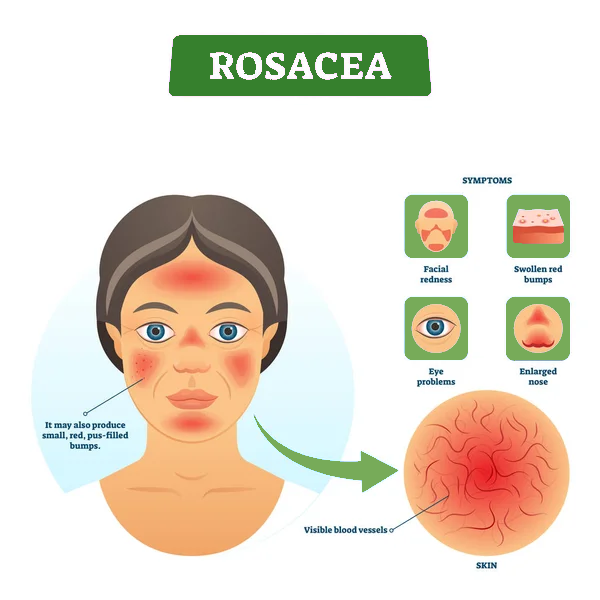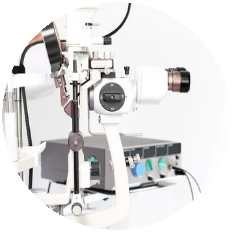Ocular Rosacea
Symptoms, Diagnosis and Treatment
What is Rosacea?
Rosacea is inflammatory skin condition, in which abnormal blood vessels form, causing redness of the skin, usually on the cheeks, forehead, chin and nose, and is associated with acne-like lesions at times.
It affects 1 in 10 adults, usually middle-aged people, and is most common in fair skinned individuals. As well as affecting facial skin, it can also affect the eyes and eyelids. Ocular symptoms can sometimes appear before any facial skin changes.

How does Rosacea affect the eyes?
- Dry eyes, blepharitis and meibomian gland disease are more common in people with rosacea. This causes dry eye symptoms such as itchy or painful eyes or a feeling of something in the eye.
- Eyes can become sensitive to light.
- If the cornea is affected, you may experience blurred vision.
- Corneal or conjunctival involvement can lead to staining and scarring of the cornea, epithelial erosions (where the covering over the cornea breaks down)
It’s believed that ocular symptoms may additionally be caused by an increase in bacteria on the eyelid, as the bacteria produce irritating or toxic substances, which also affect the composition of meibum. Another contributing factor is the increased numbers of Demodex mites in people with Rosacea.

How is Rosacea diagnosed?
Some people will have clear signs of Rosacea on their facial skin. In the absence of facial signs, certain things can contribute to a diagnosis of rosacea:
o Telangiectasis (spider veins near the surface of the skin) on the eyelid margins
o Reddened and thickened eyelids
o Dry eyes
o Chronic blepharitis
o Corneal damage
How are ocular symptoms of Rosacea treated?
As with Rosacea of the skin, this is a chronic condition and treatment is aimed at managing it, rather than curing it. Factors contributing to inflammation need to be addressed, and it is essential that meibomian gland dysfunction is closely managed to prevent damage to the cornea as a result of poor tear film.
Meibomian gland dysfunction is typically treated by the regular application of heat and massage to the eyelids to melt and express oils. LipiFlow Treatment does this most effectively and provides longer-term relief, but it can also be done at home with hot compresses or a heated eye mask, followed by manual massage of the eyelids.
Meibomian glands can sometimes be affected by abnormal blood vessels on the eyelid margins. The new Optilight IPL Therapy breaks down these abnormal blood vessels, freeing the glands to express oils normally. (It also treats facial rosacea, reducing the redness.)
Severe cases of blocked and atrophied meibomian glands may require probing, where a fine wire is pushed through the gland, clearing blockages.
Demodex infestations are eradicated by cleaning the eyelids and eyelashes with tea tree oil or, in persistent cases, oral antibiotics. Optilight IPL has also been found to destroy Demodex.
There may be a need for anti-inflammatory treatment with steroid drops or Ikervis. These are prescription medications and need to be used with caution due to potential side-effects.
Our consultant can advise you on the best approach for your specific case once he has examined your eyes and imaged your meibomian glands.








